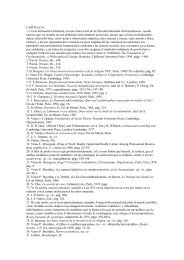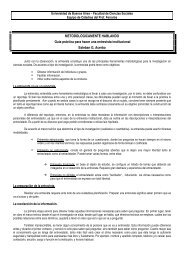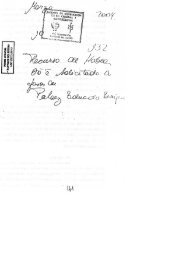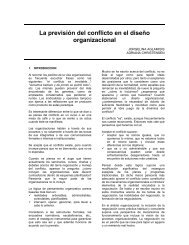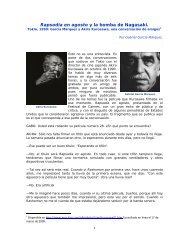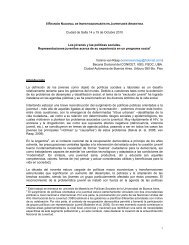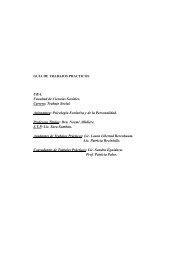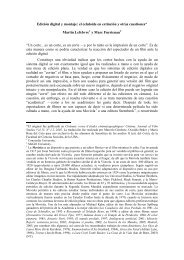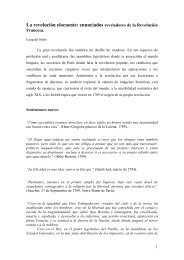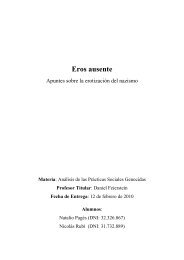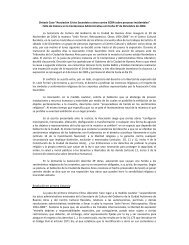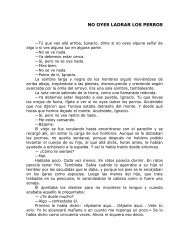Charisma Reconsidered
Charisma Reconsidered
Charisma Reconsidered
Create successful ePaper yourself
Turn your PDF publications into a flip-book with our unique Google optimized e-Paper software.
the idea that a charismatic leader could be measured by a ‘paper and pencil’ test<br />
seems ludicrous. But in practice the origins of cultural tendencies of a novel kind<br />
in contemporary society do seem to cohere reasonably well with this. ‘Originality’<br />
is a feature of the cultural notion of charisma itself, and the ability to get others to<br />
follow one’s ‘original’ cultural contribution, values and attitudes is a defining<br />
feature of the ‘cultural’ notion of charisma.<br />
In the case of organizational culture change, the link between charisma<br />
and fear and uncertainty is clear, and if we generalize, we can begin to make more<br />
sense of the present role of celebrity. In a recent book, the feminist literary critic<br />
Elaine Showalter argues that the women’s movement has needed, and continues<br />
to need icons, role-models, ‘as a way of confronting and reinventing ourselves’<br />
(quoted in Taylor, 2002: 6). The significance of this need becomes more evident<br />
when we consider the places in which celebrity is most effective. I have already<br />
discussed the example of Madonna, and noted that it is the presence of social fear<br />
that gives the fan’s imitation of Madonna its force – imitation is a way of<br />
overcoming this fear. If the need for icons is a sign of social fear, of a situation<br />
of social danger and uncertainty that a charismatic example can serve to dispel by<br />
defining and localizing, one can ask why there is this fear and uncertainty. And<br />
one can give a Weberian answer. Weber was living in what might be thought of as<br />
an early post-Christian period in which the terms that had been put in place by<br />
older religious systems, like sin, had lost the cognitive support they once had. It<br />
was the generation that had eaten the fruit of the tree of knowledge. As I have<br />
noted, 19th-century ethical thinking leans very heavily on concepts of obligation<br />
that to our ears seem peculiarly formal and technical and survive mostly in the<br />
context of law and ethical theory rather than ordinary speech. The loss of<br />
the burden of these concepts, however, comes at a price in certainty and security.<br />
Today uncertainty surrounds sex roles.<br />
With this we come full circle, to the Polynesians and their taboos.<br />
<strong>Charisma</strong>tic leaders and charismatic exemplars are probes into the uncertainties<br />
and dangers of the world. Their successes and failures tell their audiences<br />
something that reduces that uncertainty and defines it – ‘localizes’ it, in Steiner’s<br />
terms. The process seems mysterious only if we imagine interdictions or charismatic<br />
examples outside of the special situations that give them their force –<br />
situations of diffuse uncertainty or ignorance and fear in which any information<br />
about danger has a powerful defining effect. But diffuse uncertainty and fear, and<br />
bafflement about success, are a matter of degree, and consequently so is the force<br />
of the examples and interdictions that make dangers specific.<br />
The Age of <strong>Charisma</strong>?<br />
Weber never imagined that what the future held was a new age of charisma, and<br />
indeed he specifically placed the possibility of the old Gods arising from their<br />
graves at the time after the last ton of fossilized coal had been burned, after which<br />
TURNER CHARISMA RECONSIDERED 23



